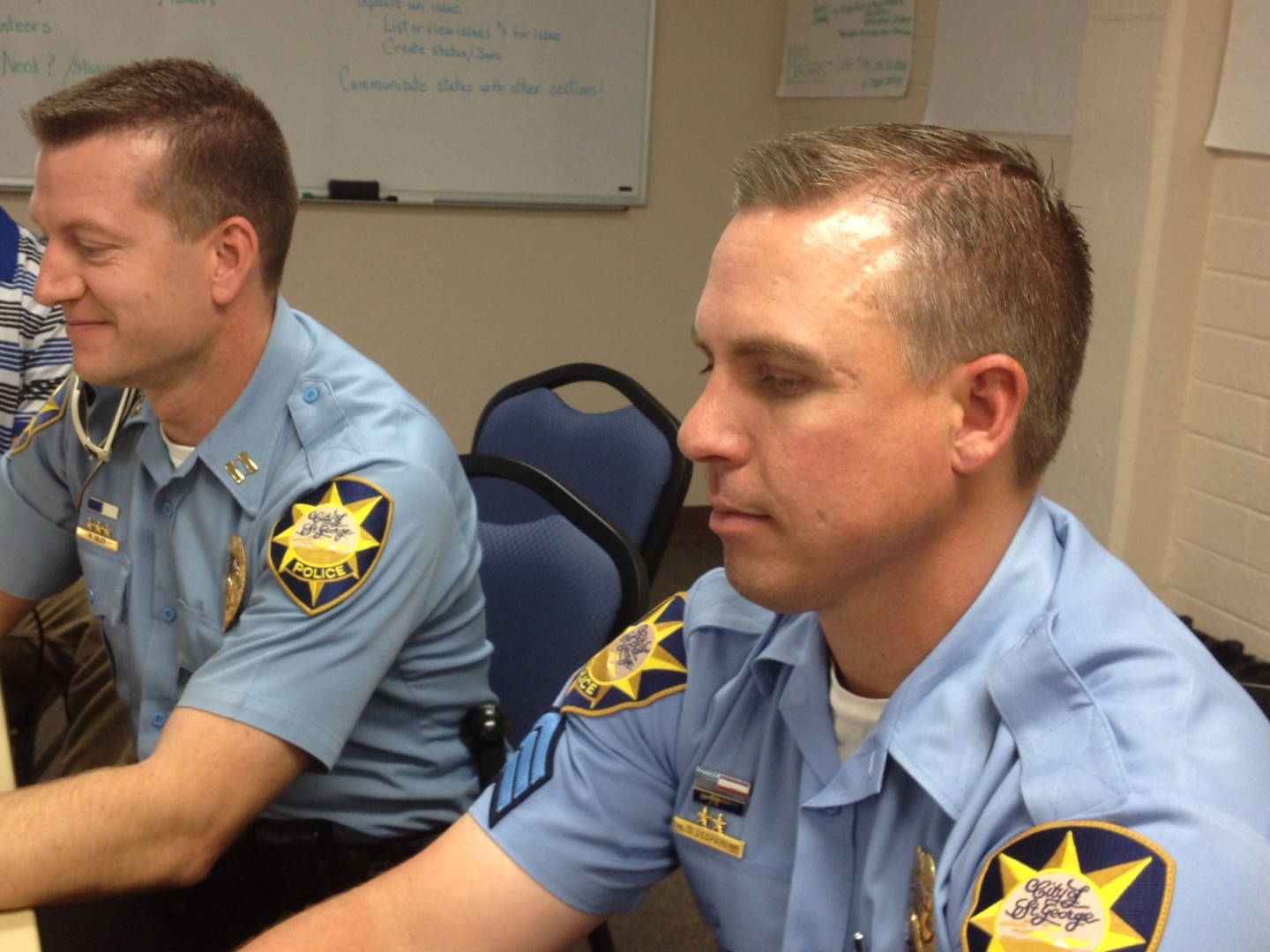
ST. GEORGE – On Thursday, members of a multi-agency Joint Information Command met at the Emergency Operation Center in the Washington County Building located at 197 east Tabernacle, to participate in a training designed to help test new technology and the flow of communication in the event of a countywide emergency.
Thursday’s training exercise was held in conjunction with the Great Utah ShakeOut – Utah’s statewide earthquake drill – and was one of several drills held throughout Washington County.

During the training, public information officers from various county agencies and organizations were able to test new information sharing technology and establish better protocol for communicating with the public and media.
“One of the primary purposes of today is to test the new Emergency Operation Center communication system,” said Pete Kuhlmann, director of Washington County Emergency Services, “we are still tweaking it and testing it.”
Also on the agenda was to establish and test a flow of communication between county agencies and the public through social media, email and radio, Kuhlmann said.
Thursday’s drill began with the report of a mock 6.4 magnitude earthquake located 26 miles north/northwest of Ivins at approximately 8 a.m. Following the initial report, public information officers began to respond to the Emergency Operation Center just as they would in an actual emergency.
The public information officers were then able to participate in mock press conferences, work with new technologies, utilize social media, learn to identify key information and prepare for eventualities such as complete power and technology disruption.

One of the most important points of the exercise was to learn how to get quick and accurate information out to the public, St. George Police Sgt. Sam Despain said.
Participants practiced identifying and reporting pertinent information such as injuries and fatalities, road closures, evacuations, and information centers.
“It is important to know what the incident is and who is affected,” St. George Police Capt. Mike Giles said, “and to keep the points factual, quell rumors.”

“We want to get information out as early as possible in the event of power and technology outages,” said Terri Draper, communications director for Intermountain Healthcare, Southwest Region Administration,“so people will know where to go for information.”
The Washington County Public Information Officers began as a group in 2008 when several agencies including, the Interfaith Council, Dixie Regional Medical Center, and the Southwest Utah Public Health Department gathered together to discuss emergency response and how to properly disseminate information to the media and public, Draper said.
The first real-life incident where they were put to the test was during the flood of 2010, Draper said.
“These trainings are absolutely invaluable from a community standpoint,” Draper said,“to have real practice is so helpful, we feel more prepared now.”
Participating agencies included:
- The Washington County Sherriff’s Office
- Washington County Emergency Services
- Washington County Human Resources
- The Bureau of Land Management, Arizona Strip District
- Dixie Regional Medical Center
- St. George Police Department
- Washington County Search and Rescue
- Washington County Inter-faith Council
- The Amateur Radio Emergency Service
- Southwest Public Health Department
- Various Media Outlets
- Civilian Volunteers
Related Posts
- The Great Utah Shake Out seeks earthquake preparedness
- Red Cross to open mock shelter for Utah earthquake drill
Email: [email protected]
Twitter: @STGnews
Copyright St. George News, SaintGeorgeUtah.com LLC, 2014, all rights reserved.